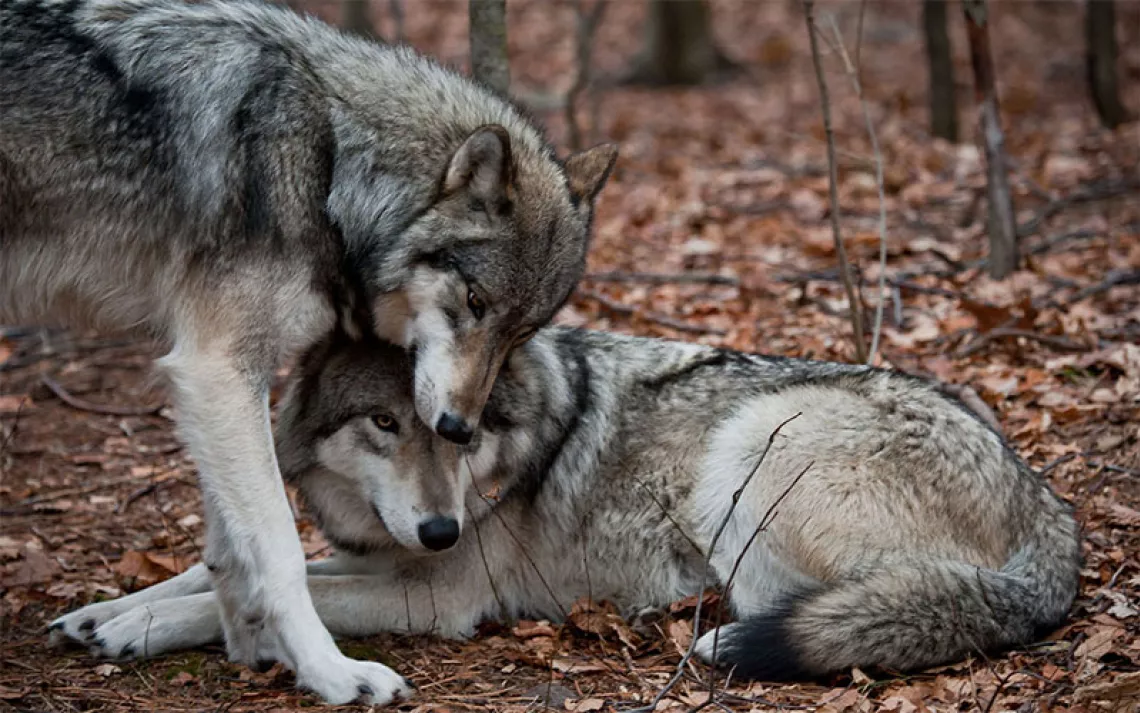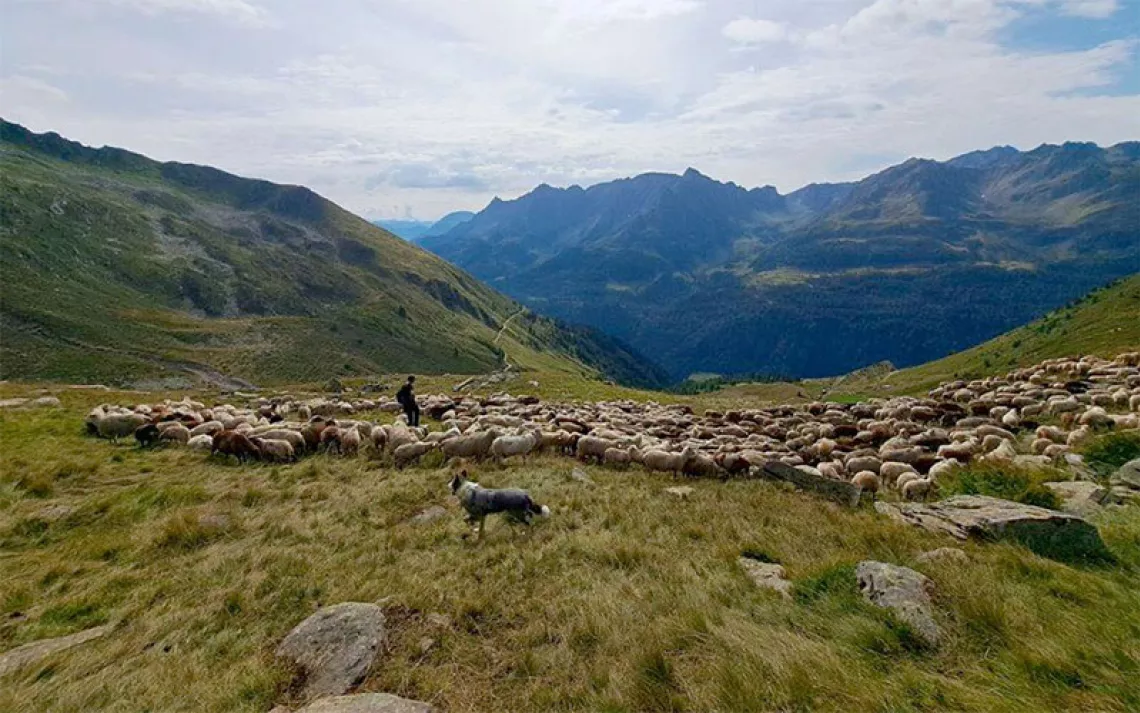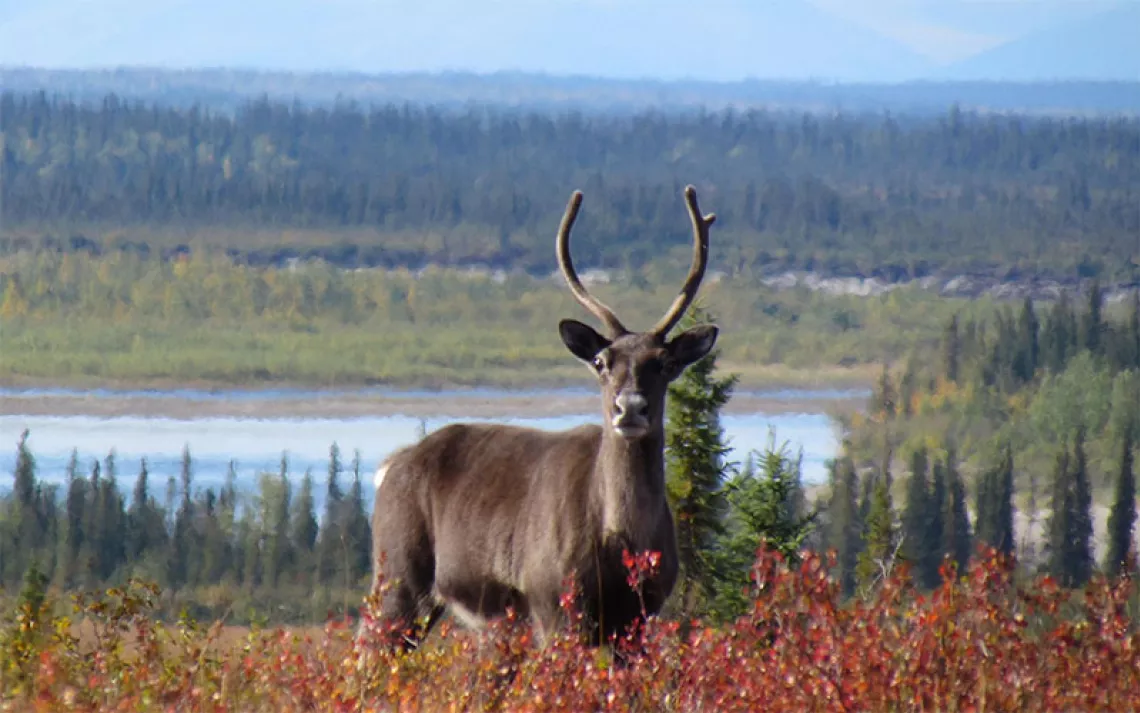Wild Wolves Return to Colorado
Wolf paws are finally on the ground, just as Colorado voters intended

Wolf 2303-OR. Colorado Parks and Wildlife released five gray wolves onto public land in Grand County, Colorado, on December 18. | Photo Courtesy Colorado Parks Wildlife
At long last, wolves have returned to Colorado. On December 18, Colorado Parks and Wildlife (CPW) officials released five wolves—two females and three males—on state park lands roughly 100 miles west of Denver. The release marked a historic moment that has been three years in the making after Colorado voters approved Proposition 114, which directed state officials to reintroduce wolves by the end of 2023.
With these initial releases, the state is well on its way to realizing a vision that wolf advocates have been working toward for decades. Conservation groups, some of which helped craft the language of Proposition 114 and defended it in court, were thrilled by the release. “This is a historic moment that makes me proud to be a Coloradan,” Kaitie Schneider, Rockies and Plains representative at Defenders of Wildlife, said in a press release. “Now, we must allow these wolves to lead us toward the first self-sustaining wolf population Colorado has seen in over 80 years.”
The wolf reintroductions are the culmination of dozens of stakeholder meetings that incorporated input from thousands of people, including technical experts and local residents. CPW also coordinated with federal officials on the release, as gray wolves are still federally listed as an endangered species in some parts of the country. The wolves’ endangered species status proved to be a sticking point as recently as last week, when ranching groups filed an 11th-hour lawsuit in an attempt to stop the reintroductions before they began. The groups asserted that state and federal wildlife agencies failed to properly consider the impacts of releasing wolves, as required for federal decisions. A judge on Friday denied the motion to halt the process, effectively giving CPW a green light to proceed.
“Pulling off a successful first wolf release in Colorado touched all corners of our agency,” Reid DeWalt, CPW’s assistant director of aquatic, terrestrial, and natural resources, said in a statement. “This has been two years of work to approve the plan plus another year of work to secure our first source population and get us to this release day.”
The five wolves released in Colorado are all wild animals that came from Oregon, where there are some 180 wolves dispersed across an estimated 24 packs. Staff with CPW did the actual capturing of wolves, with officials from the Oregon Department of Fish and Wildlife playing an advisory role, including helping to identify packs that have individuals to spare.
The capture and release took place quickly, over the span of just two days last weekend. The Colorado team checked each animal's health, vaccinated them against canine diseases, and made sure the wolves had no broken bones, teeth, or other ailments that might make them more reliant on livestock for food. Biologists focused on catching younger wolves (between one and five years old) that are likely to disperse from their home territories to start families of their own. Of the five released earlier this week, four are juveniles and two pairs come from the same pack.
Each animal was outfitted with a GPS collar so that Colorado biologists can track their movements throughout the state. This will help biologists follow the packs, learn about territories, and attempt to keep them from preying upon domesticated livestock.
The wolves were released in Grand County, which includes parts of Rocky Mountain National Park and the Arapaho and Roosevelt National Forests. The area boasts abundant natural habitat, wild prey, relatively low human population density, and distance from the neighboring states of Wyoming and Utah, which have much more hostile forms of wolf management. Just last month, it was revealed that hunters lured three wolves from Colorado to Wyoming, where the wolves were killed.
CPW staff say the ultimate goal is to have a robust, self-sustaining wolf population in the state of at least a few hundred wolves. This will likely require capturing and releasing between 30 and 50 wolves over the next five years. It could be a slow and difficult process, due to the complications of finding wild wolves in other parts of the country. Colorado officials will likely source five more wolves from Oregon by the end of winter. Agreements with other states and agencies are expected in the coming years. So far, the Nez Perce Tribe in Idaho has hinted at being a partner. Washington State, while unable to assist with the initial reintroductions, may also eventually partner with Colorado.
In addition to being federally protected, wolves living in Colorado are listed as endangered by the state government. Once the wild population reaches 50 individuals for at least four consecutive years, they will be down-listed to threatened.
Successful wolf recovery in Colorado could also bode well for wolf recovery at the national level. Just last week, a court approved a settlement between the US Fish and Wildlife Service and the Center for Biological Diversity that requires the federal agency to create a national wolf recovery plan. For many wolf advocates, the rewilding in Colorado is a way to link wolf populations in the Northern Rockies to wolves in the Southwest and Mexico. For over half a century, wolves have been functionally extinct in Colorado, meaning they no longer perform their role as a keystone species that prevents over-browsing by elk and deer, keeps herds healthy, and helps maintain wetlands. Restoration of wolves is needed, proponents argue, to restore those ecological connections.
“I'm looking forward to hearing howls in my backyard,” Delia Malone, the wildlife chair for the Colorado Chapter of the Sierra Club, said. “I'm looking forward to a return to the wild. Wilderness without our major, most essential, most important carnivore is just pretty landscape.”
 The Magazine of The Sierra Club
The Magazine of The Sierra Club



